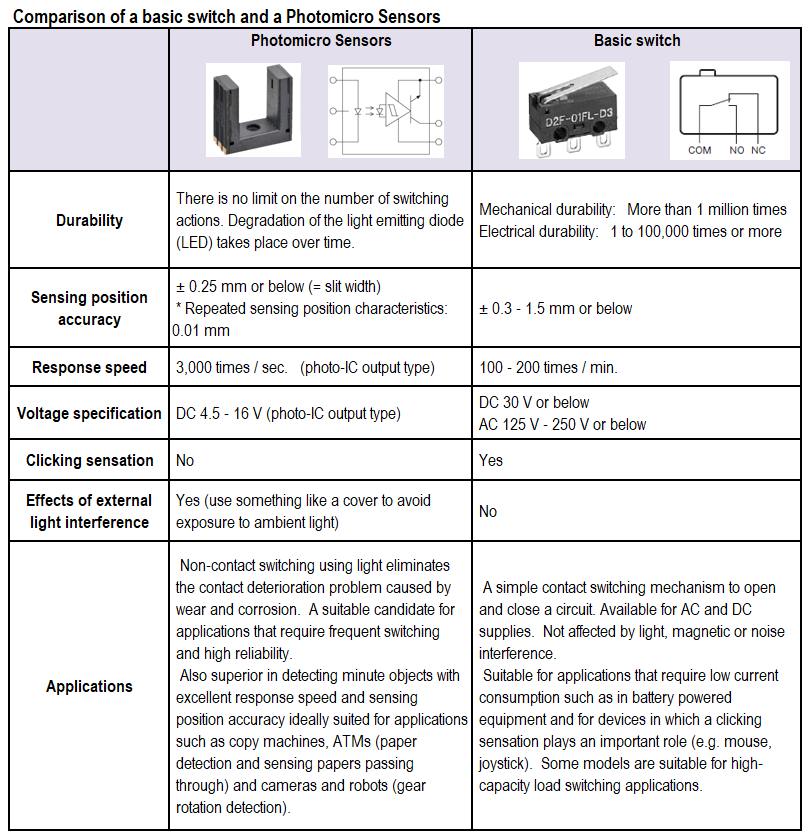How do I choose between a Photomicrosensors(photointerrupter) and a basic switch (the difference in usage)?
ID: FAQE40002E
update:
Answer
A basic switch is made of open and closed contacts whereas a Photomicrosensors(photointerrupter) is non-contact switching using an optical beam. A basic switch is available for AC and DC supplies.
Since a basic switch does not emit LED, it is ideally suited for applications that require low current consumption such as battery-powered equipment. A Photomicrosensors is superior in durability, sensing position accuracy and response speed.
Explanation
The following table shows the difference between a Photomicrosensors and a basic switch. Please use this for your reference when choosing a product to match your application, but note that these differences do not necessarily apply to all the available product models. Be sure to check the specification datasheet for details of each product model.

Quick tips
Photomicrosensor:
Use case example for non-contact switch

- A Photomicrosensors, with its non-contact switching technique, has the advantage of high reliability, eliminating the contact deterioration problem caused by wear and corrosion. For example, for a switch within machine internals that may remain closed for an extended period of time, the contacts may deteriorate from oxidation and sulfuration due to the surrounding atmosphere, ultimately affecting the switching performance. Using the Photomicrosensors for such applications is ideal without worrying about contact deterioration.
- For applications in which a force is frequently applied to the switch (e.g. push-button switches for amusement equipment and hook switches for business telephones), it is effective to use the non-contact switching method by joining the Photomicrosensors and the operating unit together as shown in the below illustration. This way, if the operating unit is damaged, the user can repair or replace the operating unit without touching the electric circuit for easy maintenance. Furthermore, the combination allows easy design layout with less consideration for switch strokes.
| Product category | Sensors Photomicro Sensors |
|---|---|
| Classification | Selection, Characteristics |
| Related keywords |
|